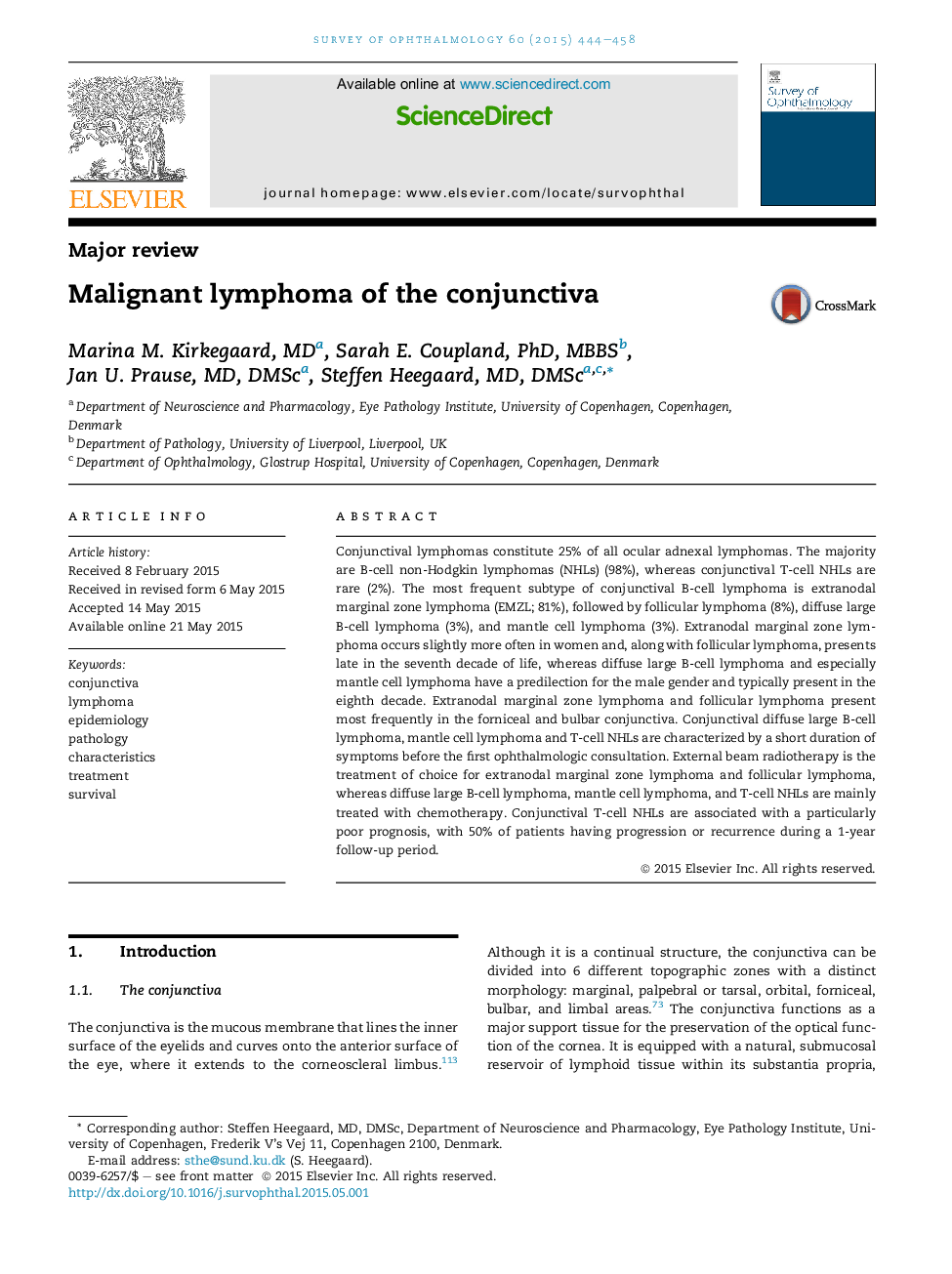| Article ID | Journal | Published Year | Pages | File Type |
|---|---|---|---|---|
| 4032481 | Survey of Ophthalmology | 2015 | 15 Pages |
Conjunctival lymphomas constitute 25% of all ocular adnexal lymphomas. The majority are B-cell non-Hodgkin lymphomas (NHLs) (98%), whereas conjunctival T-cell NHLs are rare (2%). The most frequent subtype of conjunctival B-cell lymphoma is extranodal marginal zone lymphoma (EMZL; 81%), followed by follicular lymphoma (8%), diffuse large B-cell lymphoma (3%), and mantle cell lymphoma (3%). Extranodal marginal zone lymphoma occurs slightly more often in women and, along with follicular lymphoma, presents late in the seventh decade of life, whereas diffuse large B-cell lymphoma and especially mantle cell lymphoma have a predilection for the male gender and typically present in the eighth decade. Extranodal marginal zone lymphoma and follicular lymphoma present most frequently in the forniceal and bulbar conjunctiva. Conjunctival diffuse large B-cell lymphoma, mantle cell lymphoma and T-cell NHLs are characterized by a short duration of symptoms before the first ophthalmologic consultation. External beam radiotherapy is the treatment of choice for extranodal marginal zone lymphoma and follicular lymphoma, whereas diffuse large B-cell lymphoma, mantle cell lymphoma, and T-cell NHLs are mainly treated with chemotherapy. Conjunctival T-cell NHLs are associated with a particularly poor prognosis, with 50% of patients having progression or recurrence during a 1-year follow-up period.
